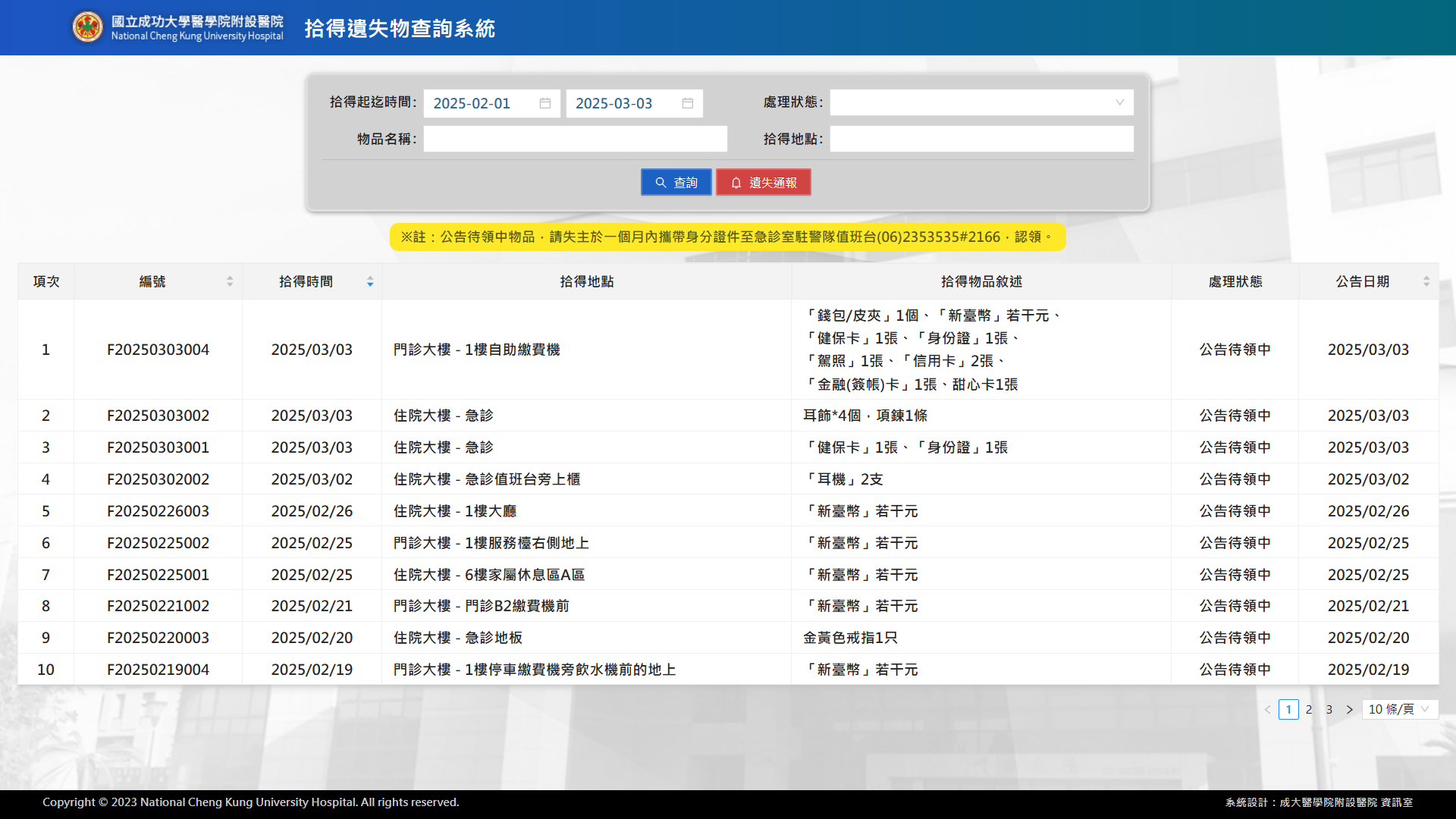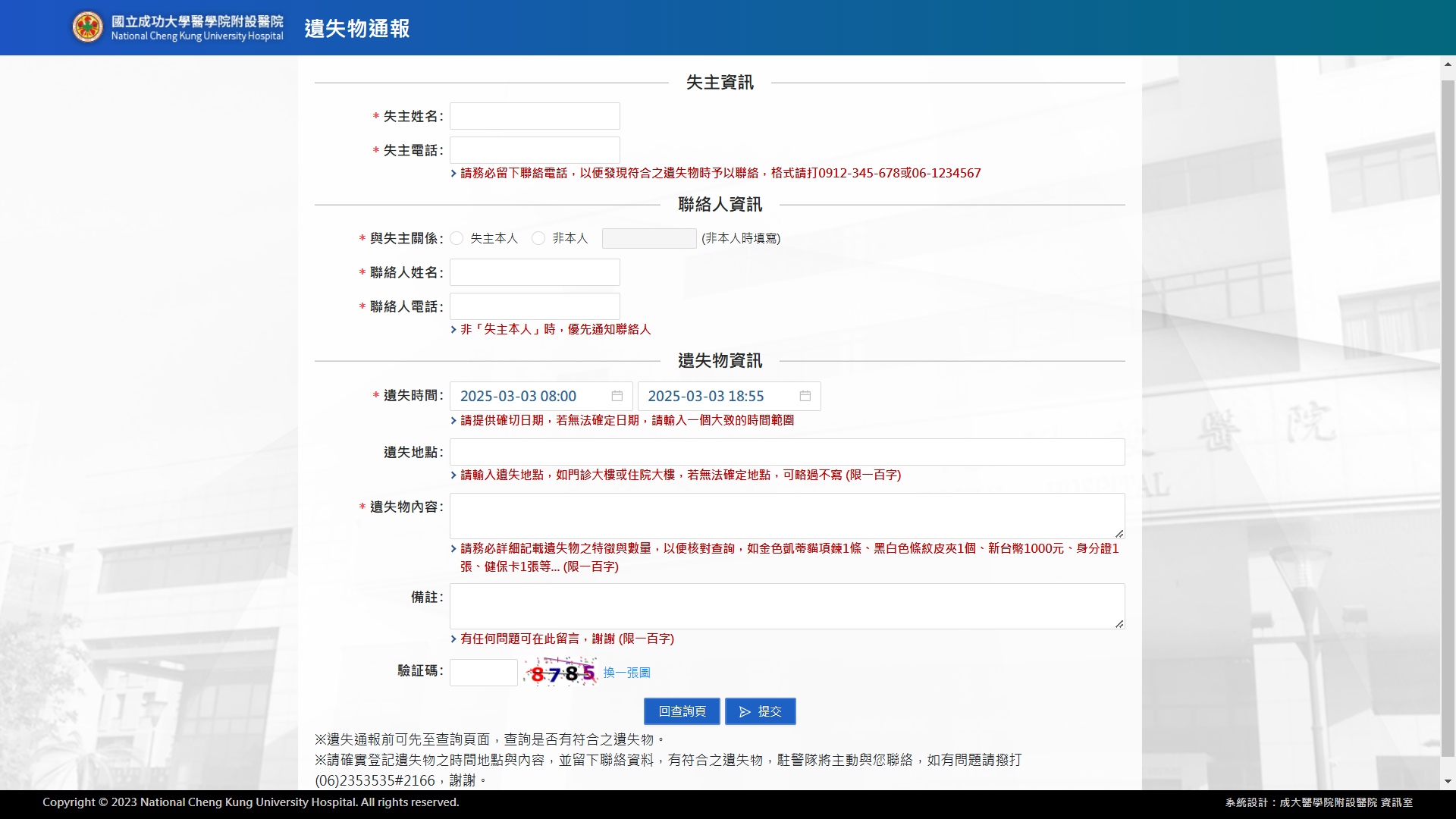Previously, when employees or members of the public turned in lost items to the security office, the items were recorded manually on paper. Designated staff would then compile the data and post public notices once a month. However, handwritten records could be difficult to read, leading to inaccuracies and delayed updates, reducing the chances of owners recovering their lost items efficiently.
An entirely digitized lost and found system was launched to address these issues on March 1, 2024. When an item is turned in, the on-duty security personnel register it directly. If the finder is an employee or has previously provided their information in the system, entering their employee ID or national ID number will auto-fill the relevant details, saving time on data entry. Most importantly, once the item is logged, it is immediately published online, allowing the public to search for lost items in real-time —no longer need to wait for a monthly update. This dramatically improves transparency and increases the chances of successful recovery.
The system upgrade has delivered four key benefits:
(1) Real-time information access, enhancing transparency.
(2) Improved operational efficiency, saving approximately 40 hours of administrative work annually for both finders and security staff.
(3) Greater public convenience eliminates the need for phone inquiries and reduces workforce demands.
(4) Integration with loss reports, allowing security to cross-reference reported and found items, increasing the retrieval success rate.
The new system replaces paper-based processes with digital management, simplifying workflows and speeding up information sharing. This reduces administrative burden and enables faster recovery of lost items—achieving a win-win outcome for both the public and hospital staff.

